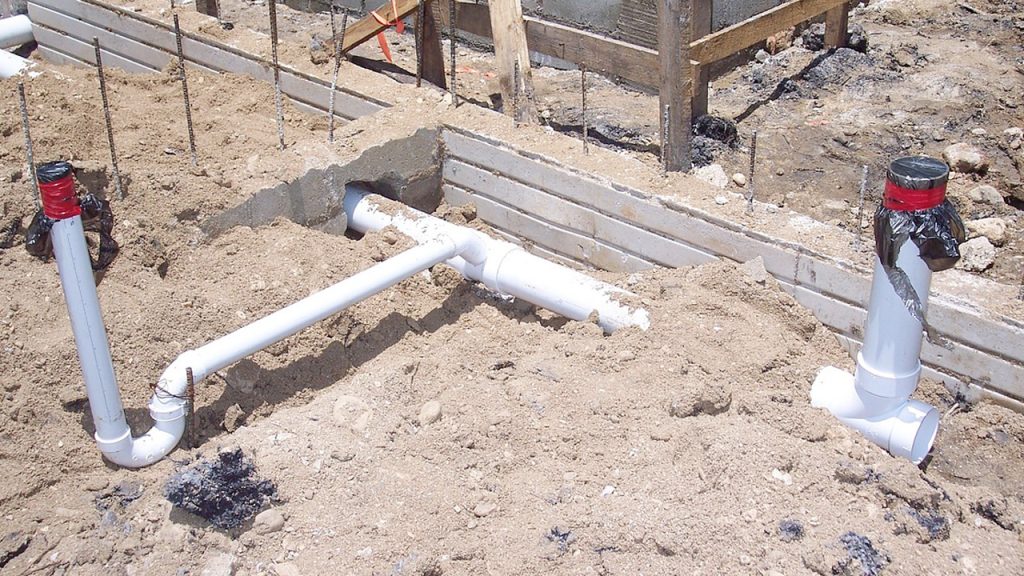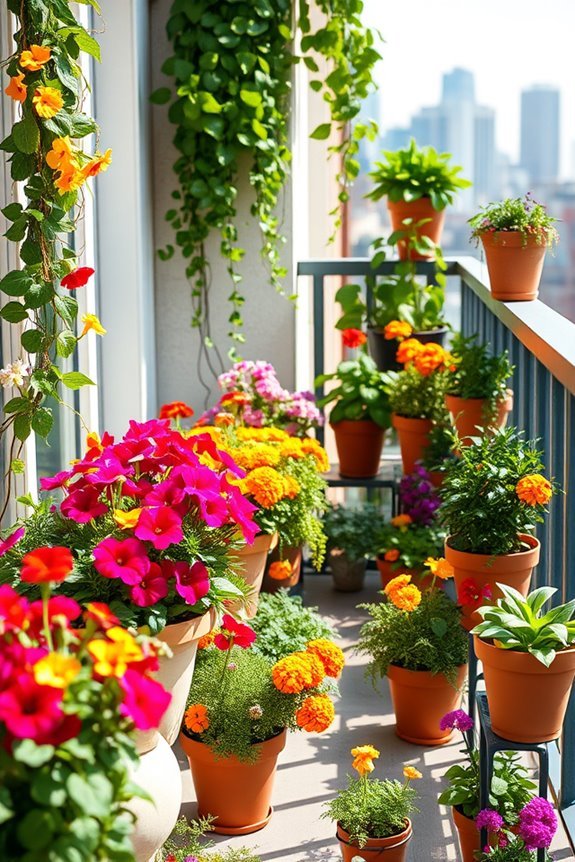How deep are plumbing pipes under a slab house?
Are you curious about the depths at which plumbing pipes are laid under a slab house? In this article, we will delve into the depths of plumbing pipes and uncover the mysteries beneath your home’s foundation.
Plumbing systems play a vital role in any household, and understanding the placement of pipes is crucial for maintenance and repairs. Whether you’re dealing with a leak, clog, or considering a renovation project, knowing the depth of your plumbing pipes can make all the difference.

Photo by ReliableMidget, Pixabay
The depth of plumbing pipes
The depth at which plumbing pipes are laid under a slab house is essential for several reasons. Firstly, it helps homeowners and plumbers locate and access the pipes when repairs or maintenance work needs to be done. Knowing the exact depth of the pipes can save time, effort, and potential damage to the foundation.
Understanding the depth of the plumbing pipes can help prevent potential issues that may arise due to external factors such as tree roots, soil erosion, or changes in ground elevation.
By knowing the depth, homeowners can take appropriate measures to protect the pipes and ensure the longevity of their plumbing system.
Having knowledge of the plumbing pipe depth can be beneficial during renovation projects. When planning to add new fixtures or reroute existing pipes, understanding the depth can help determine the feasibility of the project and avoid any costly surprises.
There’s more to explore! Here’s another valuable read: What Type of Pipe Is Used for Stormwater?
Factors that determine the depth of plumbing pipes
Several factors influence the depth at which plumbing pipes are laid under a slab house. Understanding these factors can give homeowners a better idea of what to expect when it comes to the depth of their own plumbing system.
Local building codes
Each region may have specific building codes that dictate the minimum depth at which plumbing pipes should be laid. These codes are in place to ensure the durability and safety of the plumbing system. It is essential to consult local building codes or professionals to adhere to these regulations.
Age of the house
The age of the house can also play a role in determining the depth of plumbing pipes. Older houses may have different plumbing systems and pipe materials, which can affect the depth at which the pipes were installed.
Soil type
The type of soil on which the house is built can impact the depth of plumbing pipes. Different soil types have varying levels of stability, drainage capabilities, and susceptibility to erosion. These factors can influence the depth at which pipes are laid to ensure their stability and functionality.
Climate
Climate conditions, such as extreme temperatures or freeze-thaw cycles, can affect the depth at which plumbing pipes are laid. In colder climates, pipes may need to be buried deeper to prevent freezing and potential pipe bursts.
Type of pipes used
The type of pipes used in the plumbing system can also influence their depth. Different materials have varying levels of durability, flexibility, and resistance to corrosion. These factors can impact the recommended depth at which the pipes should be laid for optimal performance.
You might also be interested in: How to Solder Copper Pipe with Water In It?
Common depths of plumbing pipes under a slab house
While the depth at which plumbing pipes are laid can vary depending on the factors mentioned above, there are some common depths that are generally followed in construction.
In most cases, plumbing pipes are buried between 12-18 inches under a slab house. This depth provides a balance between accessibility for repairs and protection from external factors. It’s important to note that this is a general guideline, and specific circumstances may require pipes to be laid at different depths.
It’s worth mentioning that the depth of the pipes can vary within the same plumbing system. For example, pipes leading to fixtures such as toilets and sinks may be shallower, while main supply lines and sewer lines are typically deeper.
Determining the exact depth of your plumbing pipes is crucial for any maintenance, repair, or renovation work. Let’s explore the tools and techniques available for this purpose.
Don’t miss out on related tips: Read this next: can a PVC pipe be used for potable water?
Tools and techniques for determining the depth of plumbing pipes
When it comes to determining the depth of plumbing pipes under a slab house, there are several tools and techniques available. These methods can help homeowners and plumbers accurately locate and assess the depth of the pipes.
Ground penetrating radar (GPR)
GPR is a non-invasive method that uses electromagnetic waves to create a subsurface image of the area. By analyzing the reflected signals, professionals can determine the depth and location of plumbing pipes. GPR is highly accurate and provides real-time results without the need for excavation.
Pipe locating devices
Pipe locating devices use electromagnetic signals to detect the presence and depth of metal pipes. These handheld devices can be used to trace the path of the pipes and provide an estimate of their depth. While not as precise as GPR, pipe locating devices are a cost-effective option for smaller-scale projects.
Consulting blueprints and building plans
If you have access to the blueprints or building plans of your house, they can provide valuable information about the location and depth of plumbing pipes. These documents are especially useful during renovations or when dealing with older houses.
Consulting professionals
When in doubt, it’s always best to consult professionals who specialize in plumbing or construction. They have the knowledge, experience, and tools to accurately determine the depth of plumbing pipes. Hiring a professional can save you time and provide peace of mind.
Determining the depth of plumbing pipes is essential, but what are the potential issues that can arise at different depths? Let’s find out this.
Potential issues with plumbing pipes at different depths
The depth at which plumbing pipes are laid can impact their vulnerability to certain issues. Understanding these potential challenges can help homeowners take preventive measures and address problems promptly.
Shallow pipes
Shallow pipes are more susceptible to damage from external factors such as tree roots, shifting soil, or heavy construction. If pipes are not adequately protected or located at a sufficient depth, they may be prone to leaks, cracks, or blockages. Regular inspection and maintenance are crucial to identify and address any issues promptly.
Deep pipes
While deep pipes may be less prone to external damage, accessing them for repairs or maintenance can be challenging. The excavation required to reach deep pipes can be time-consuming and costly. It’s important to ensure that plumbing pipes are installed at an optimal depth that balances accessibility and protection.
Corrosion
Regardless of the depth at which pipes are laid, corrosion can be a potential issue. Certain factors like the type of pipe material, water quality, and soil conditions can accelerate the corrosion process. Regular inspections and maintenance can help identify early signs of corrosion and prevent costly repairs.
Freezing
In colder climates, pipes laid at shallow depths may be at risk of freezing during winter months. Frozen pipes can lead to bursts and extensive water damage. Insulating pipes or burying them at a deeper depth can help prevent freezing issues.
Now that we’ve explored the potential issues, let’s move on to some tips for maintaining plumbing pipes under a slab house.
Tips for maintaining plumbing pipes under a slab house
Proper maintenance is key to ensuring the longevity and functionality of plumbing pipes under a slab house. Here are some essential tips to keep your plumbing system in top shape:
Regular inspections: Schedule periodic inspections by a professional plumber to check for any signs of leaks, corrosion, or blockages. Early detection can prevent major damage and costly repairs.
Monitor water pressure: Excessive water pressure can strain plumbing pipes and lead to leaks or bursts. Install a pressure regulator to maintain optimal water pressure throughout your home.
Avoid chemical drain cleaners: Chemical drain cleaners can corrode pipes and cause long-term damage. Instead, use natural alternatives or consult a professional plumber for safe and effective solutions.
Protect pipes from extreme temperatures: Insulate pipes in cold climates or during winter months to prevent freezing. Use pipe sleeves or heat tape to provide an extra layer of protection.
Be mindful of what goes down the drain: Avoid disposing of grease, large food particles, or non-biodegradable items down the drain. These can cause clogs and put strain on the plumbing system.
Keep an eye on water quality: Poor water quality can contribute to corrosion and deterioration of plumbing pipes. Consider installing a water filtration system to improve the quality of your water supply.
By following these maintenance tips, you can minimize the risk of plumbing issues and ensure the longevity of your plumbing system. However, if you’re uncertain about the depth of your plumbing pipes or need professional assistance, it’s always best to consult a plumbing expert.
Hiring a professional for plumbing pipe depth assessment
When it comes to determining the depth of plumbing pipes under a slab house, hiring a professional can provide accurate results and peace of mind. Professional plumbers have the expertise, tools, and experience to assess the depth of plumbing pipes and provide recommendations based on your specific situation.
When selecting a professional for plumbing pipe depth assessment, consider the following:
Experience
Look for professionals with a proven track record in plumbing and pipe depth assessment. Experience ensures that they can efficiently and accurately determine the depth of your plumbing pipes.
Certifications and licenses
Ensure that the professional you hire holds the necessary certifications and licenses required for plumbing work. This guarantees that they meet industry standards and regulations.
References and reviews
Ask for references or read online reviews to gauge the quality of service provided by the professional. Positive reviews and satisfied customers are indicators of reliable and trustworthy professionals.
Cost estimates
Request cost estimates from multiple professionals to compare prices and ensure you’re getting a fair deal. Keep in mind that the cheapest option may not always be the best in terms of quality and accuracy.
By hiring a professional for plumbing pipe depth assessment, you can have peace of mind knowing that experts are handling the task and providing you with accurate information.
Cost considerations for plumbing pipe depth assessment
The cost of plumbing pipe depth assessment can vary depending on several factors. Here are some cost considerations to keep in mind:
Size of the property: The size of your property can impact the cost of plumbing pipe depth assessment. Larger properties may require more time and effort to assess the depth of plumbing pipes, resulting in higher costs.
Accessibility: The accessibility of the plumbing pipes can also affect the cost. If the pipes are easily accessible, the assessment process can be quicker and more cost-effective. If excavation or specialized equipment is required to reach the pipes, the cost may increase.
Additional services: Some professionals may offer additional services along with the pipe depth assessment, such as leak detection or maintenance recommendations. These additional services can impact the overall cost.
Location: The cost of plumbing services can also vary depending on your location. Factors such as local labor rates and competition can influence the pricing.
When considering the cost of plumbing pipe depth assessment, it’s important to weigh the benefits of accurate information and professional expertise against the upfront cost. Investing in a thorough assessment can potentially save you from costly repairs or renovations in the future.
Conclusion
The depth at which plumbing pipes are laid under a slab house is crucial for homeowners. By knowing the depth, homeowners can locate and access the pipes for maintenance, repairs, or renovation projects. Factors such as local building codes, the age of the house, soil type, climate, and pipe materials can influence the depth at which plumbing pipes are laid.
Determining the depth of plumbing pipes can be done through various methods, including ground penetrating radar, pipe locating devices, consulting blueprints, or hiring professionals. By accurately assessing the depth, homeowners can take preventive measures, address potential issues, and ensure the longevity of their plumbing system.
Regular inspections, monitoring water pressure, proper disposal practices, and protecting pipes from extreme temperatures are essential for maintaining plumbing pipes under a slab house. If uncertainty persists or professional assistance is needed, hiring a plumbing expert for pipe depth assessment is recommended.
Considering the cost of plumbing pipe depth assessment, homeowners should weigh the benefits of accurate information and professional expertise against the upfront cost. Investing in a thorough assessment can potentially save homeowners from costly repairs or renovations in the future.


